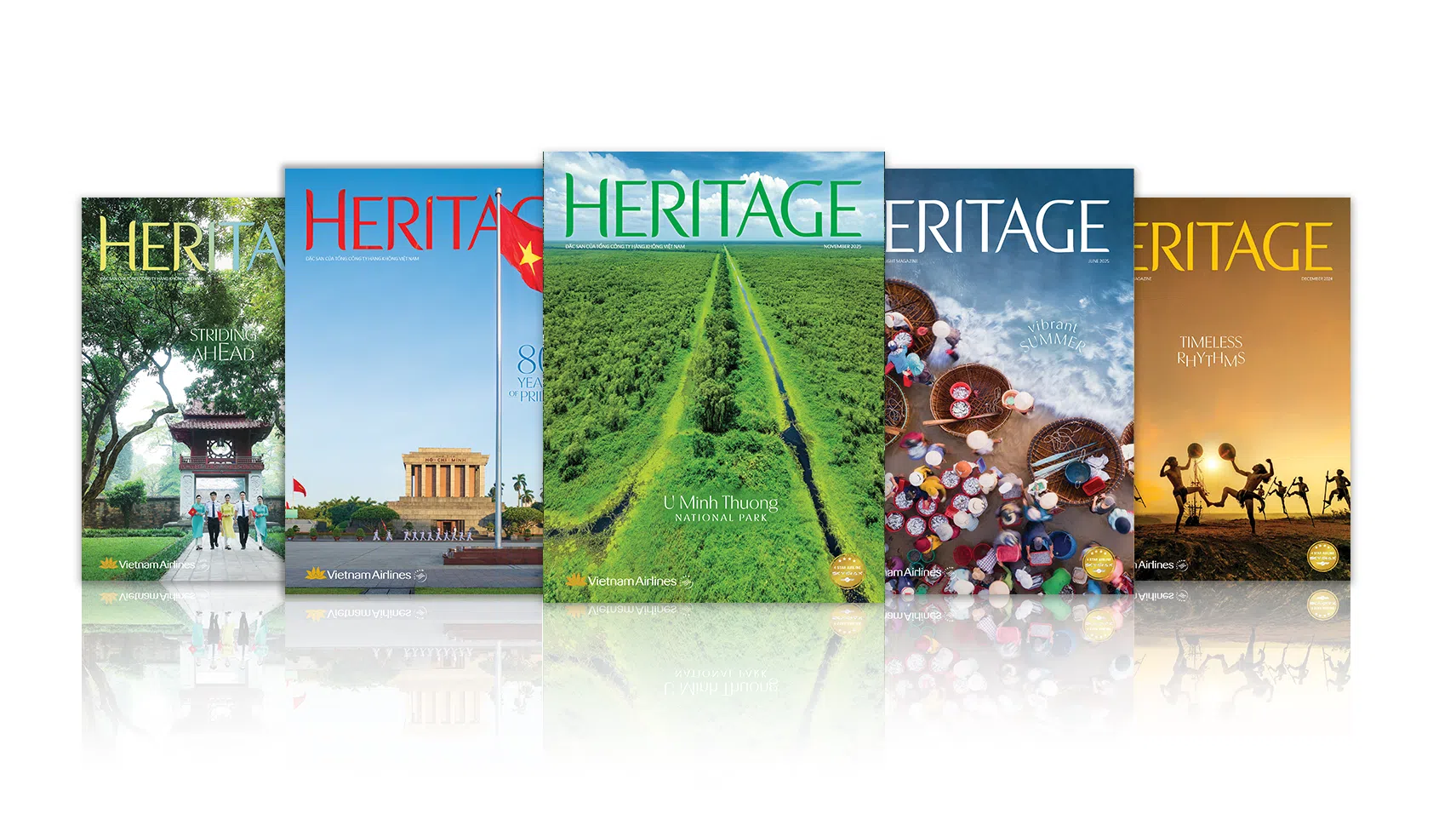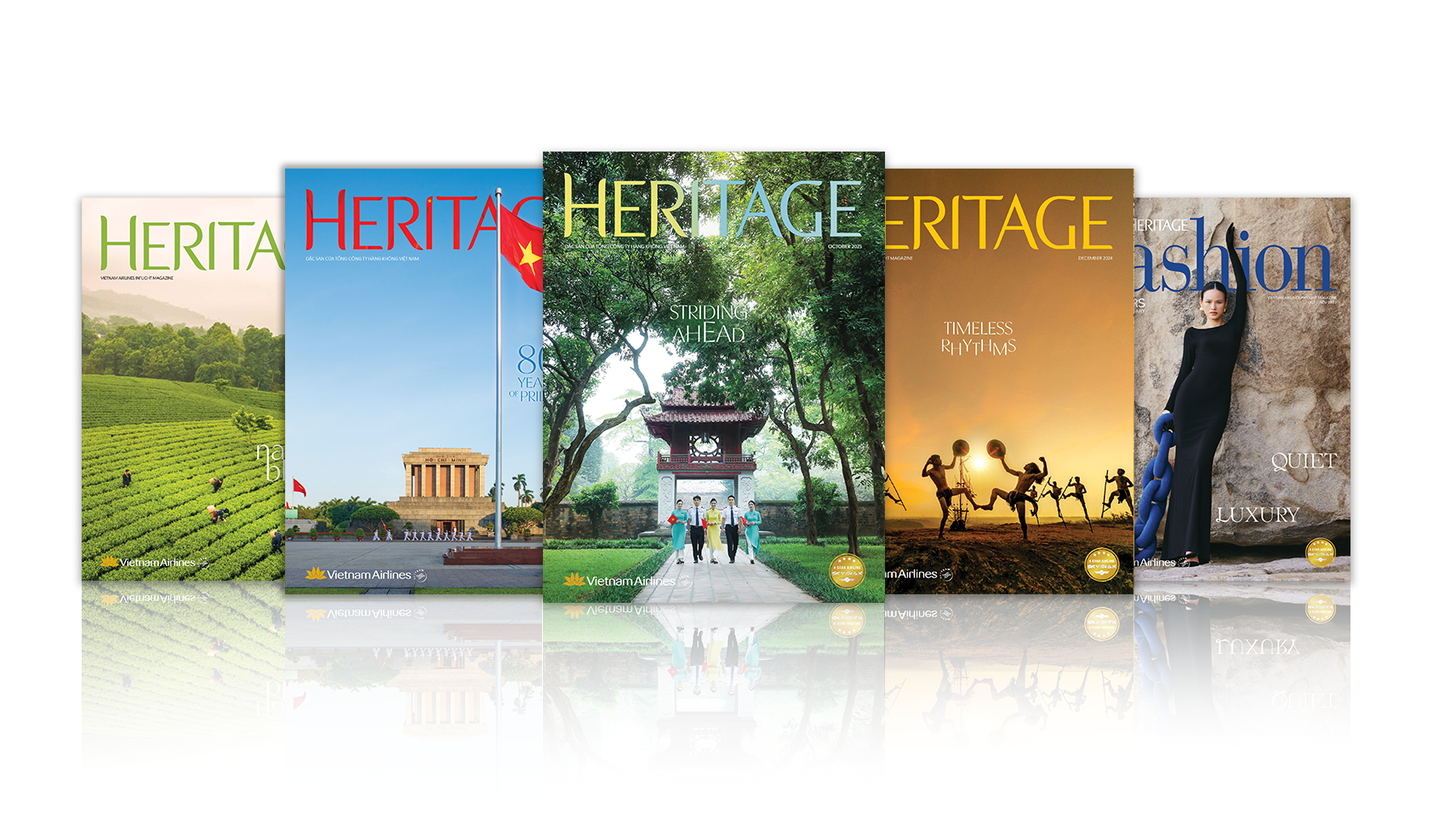Story: Nguyen Phuoc Bao Dan
Photos: Nguyen Phong
In Vietnam, ancient interiors shimmer with golden splendor, their beauty born from patient labor. Lacquer creates a warm, rich base; gilded lines add a luminous sheen that gives depth to carvings and spaces. At first glance, the effect seems effortless. In truth, the glow of precious metal in interiors and on objects once reserved for aristocrats rests on years of practice and the deft hands of artisans who chose gilded lacquer as their life’s work.
I used to think of jade as China’s special love, and of India as a culture obsessed with diamonds. Located between those two great civilizations, Vietnam seemed especially enamored of gold. Yet, upon closer examination, I see that gold is universal: it is used as currency, in jewelry, and to adorn living spaces. In Vietnam, what feels distinct is the restraint with which gold is used. Rather than flooding rooms with this precious metal, Vietnamese designers use it sparingly, just enough to spark the eye. This results in a glamorous atmosphere with lively, precise accents that light up wooden interiors without overwhelming them.
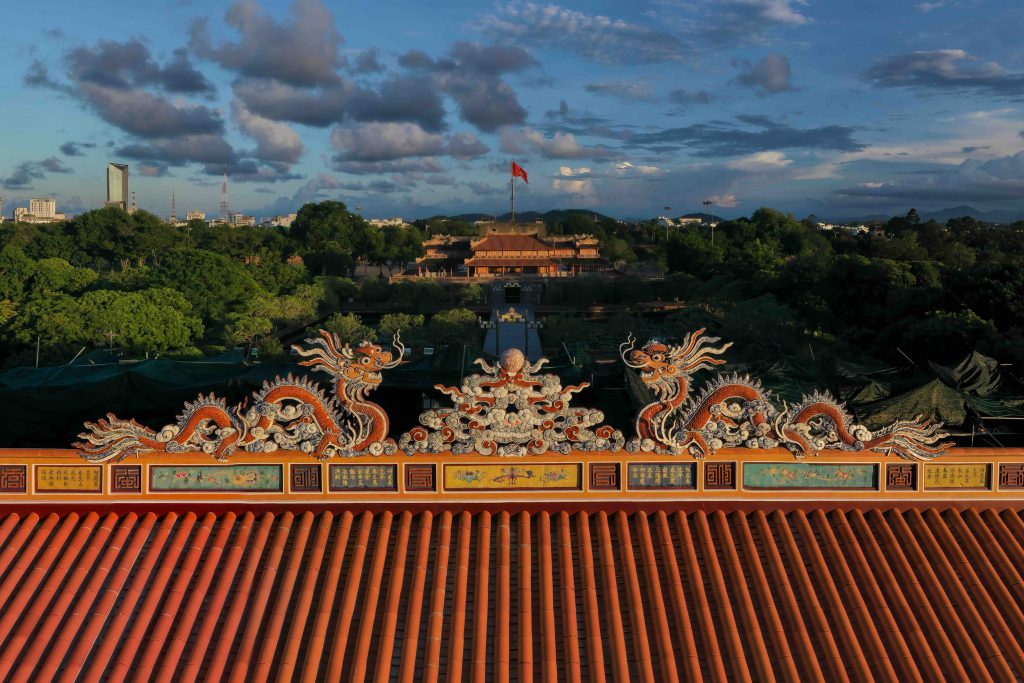
Skillful hands lie behind this artistry. On dark wood, fine, gilded lines travel like soft, luminous threads, guiding the gaze and teasing depth out of the shadows. Gilding conjures the uncanny through reflections that shift as you move. Its tracery lingers in one’s memory, mapping interiors in strokes that reveal corners, frame carvings, and carry tradition from one generation to the next.
From the very first coats applied on a wooden surface, the work proceeds using Vietnam’s traditional natural lacquer sap, son ta, a material refined over months by filtering and blending to yield subtle hues. The artisan mixes in sawdust, alluvial clay, and charcoal, and reaches for specialized tools: a steel scraper to level, a craft knife to incise, brushes for coating, a horn burnisher to polish, and a whetstone to keep edges true. A brief pass of flame smooths tiny burrs along carved lines. Then come the traditional underlayers – bo, hom, and voc – laid in patient succession. Only after this quiet groundwork is set does the gold leaf arrive, its wafer-thin sheets breathed onto the prepared surface and pressed into place. One or two final coats seal the gold and create a protective gloss. From afar, the process seems simple. Up close, it holds generations of experience in every step. Artisans say the craft allows no errors and demands meticulous patience. This is partly because the materials are precious: son ta is prepared by guarded recipes, and fine sheets beaten from real gold. Proving the diligence required, conservators restoring Dien Thai Hoa in Hue have peeled as many as fourteen to sixteen layers of lacquer off structural components, each layer a record of arduous labor and time. This craft requires great patience; each coat is applied and cured in a draft-free room. Wisdom is also essential, as the weather rules the work’s rhythm: heat, dry air, and damp all change the required waiting periods, and successful timing demands experience.
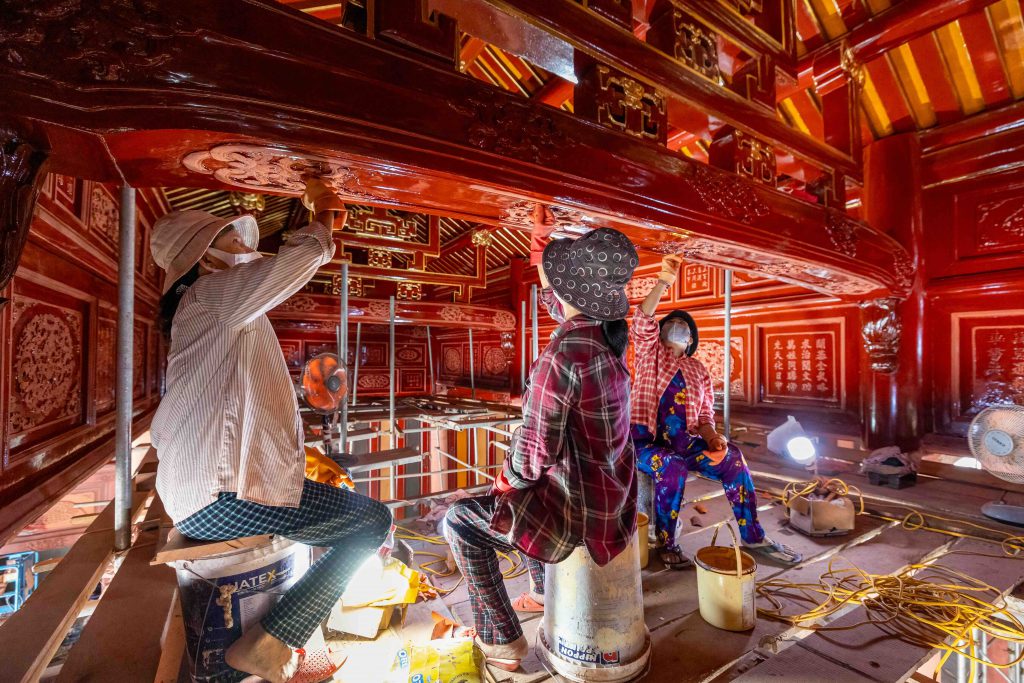
Central Vietnam has long been a land of gold. Under the Nguyen lords, mining was encouraged, generating taxes that filled the state coffers. The court established offices to receive gold levies, to refine precious metals, and to craft finished ornaments and jewelry for royal use. In 1695, when the monk Thach Liem visited Phu Xuan at the invitation of Lord Nguyen Phuc Chu, he wrote that palaces and halls were elaborately carved and gilded, and that finely made utensils of pure gold and silver served the lord’s household.
The Phu Xuan described by this monk rose from the labor of artisan-soldiers who followed the Nguyen south from the North. Organized into state-run workshops, they built and decorated the royal palaces. Under the emperors, these workers formed the Tat tuong ty (Painters), the office responsible for painting and gilding objects and architecture. In Hue today, the village of Tien Non in Phu Mau keeps the craft of gilded lacquer alive.
Through various upheavals, the gilders attached to the Tat tuong ty were scattered far and wide. Even so, they taught their craft to their children and preserved this occupation. The recent restoration of Hue’s imperial architecture has called them back to work, reviving techniques handed down through families. Step by careful step, they have returned Hue to its original golden radiance.
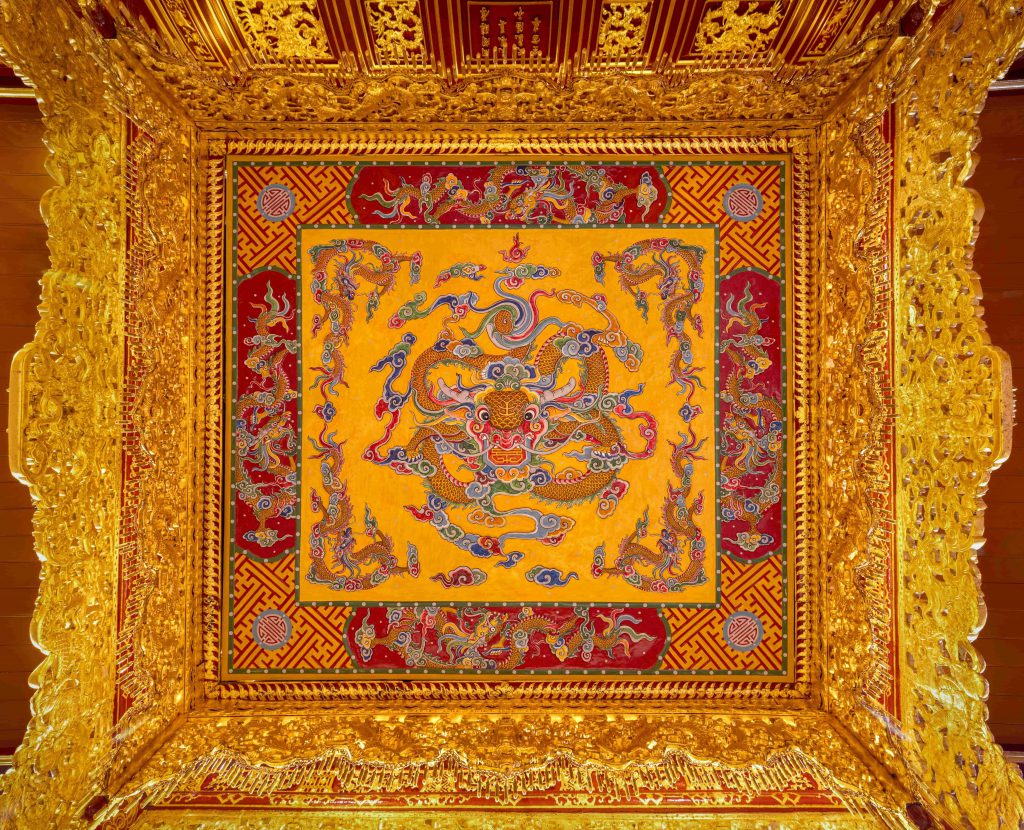
Many will tell you that in Hue the boundary between courtly and folk architecture is thin. This is especially true of gilding. From palace interiors and royal furnishings to the horizontal panels and paired couplets that hang in princes’ residences and officials’ mansions, onward into communal houses and pagodas, and on altars and ritual objects everywhere, you see fine gold lines on scarlet lacquered backgrounds. Come to Hue and stand inside halls whose surfaces were burnished by countless hands. Let yourself be still and feel the space. The palette speaks for itself: red for vital energy and the life-force, gold for nobility and a spirit of liberation. Together, these colors carry an ancient desire to make living spaces brim with vitality. In their glow, we witness a vigorous renaissance of Hue’s heritage today. Thanks to this clear intention, gilded lacquer is not ostentatious, serving to highlight the architecture rather than show off. It is a language of emphasis, not domination, aligning highlights with structure so that beams, brackets, and motifs read cleanly. In a dim hall, gilded lacquer catches the smallest light and returns it as warmth. In bright sun, it holds its dignity, never glaring. To watch the artisans work is to see time made visible: each layer settles, each line breathes, and the final surface seems to glow from within as if polished by memory and air. And shared silence.








